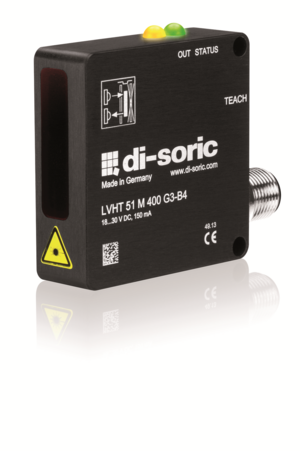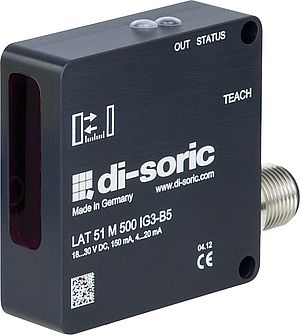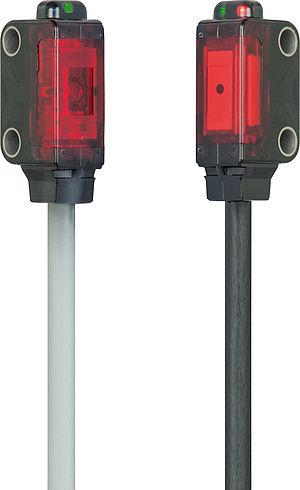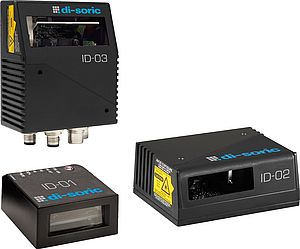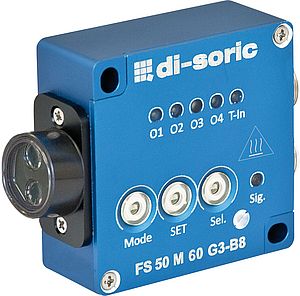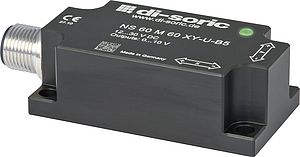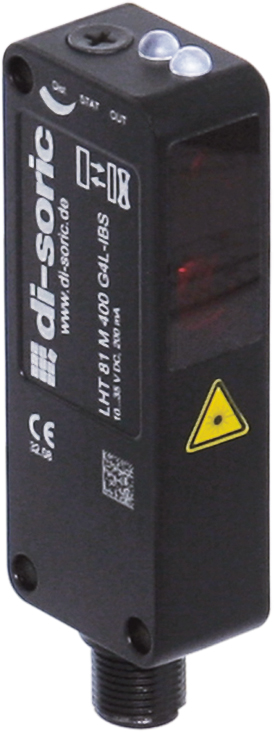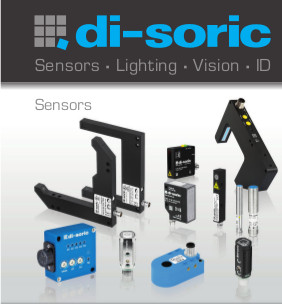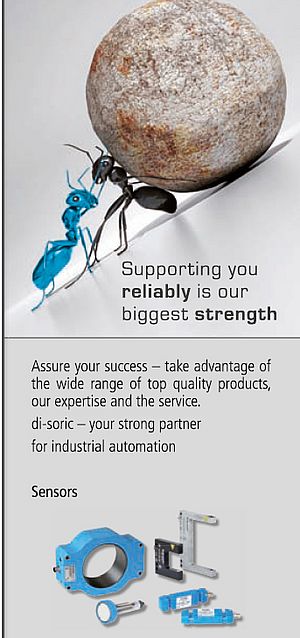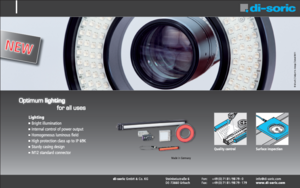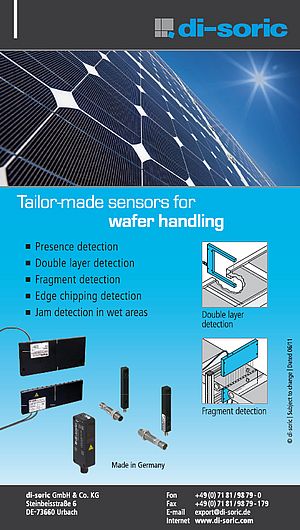di-soric is expanding its line of fork light barriers to include measuring, high-resolution linear laser fork light barriers, which can be used to detect and analyse minimal dimensional deviations. A special lens projects a fine, absolutely parallel laser beam onto a high-resolution CMOS line. As with the switching fork light barriers, the fork design of these units eliminates the need for time-consuming alignment of the transmitter to the receiver. This speeds up measuring tasks.
The large measurement range can be reduced by up to 20%, if necessary. This significantly increases the signal deviation of the analogue output while maintaining a constant dimensional change in the test object. Both 4 ... 20 mA and 0 ... 10 V are available, at the flip of a switch. The reverse teach sequence in the setup process makes it possible to output inverted analogue signals. The analogue signal can also be frozen by means of external trigger signals. In addition, two switching outputs with window programming are available. These switching outputs operate independently of the previously selected measuring range. If the upper or lower limits of the defined analogue range are exceeded, this can be output by means of two push-pull switching outputs. Push-button inversion of these switching outputs is also possible, in order to achieve the desired and reliable function for the user.
All teach processes for defining the range of analogue and switching outputs can be implemented both with the integrated teach buttons and via two external teach lines and high/low signals. These lines can be used to disable the teach buttons on the unit. This secures the measuring laser line fork light barrier against accidental misadjustment.
The metal housing provides several mounting options, some of which are the same as those of a switching fork light barrier with the same fork width. This facilitates the change from "switching" to "measuring". Bright output and operating voltage LEDs clearly signal the output states and help to simplify initial operation of the units by means of teach buttons. Typical applications are high-precision margin controls, the inspection, sorting and separation of small parts, as well as the measurement of jewellery type parts that are difficult to position.




